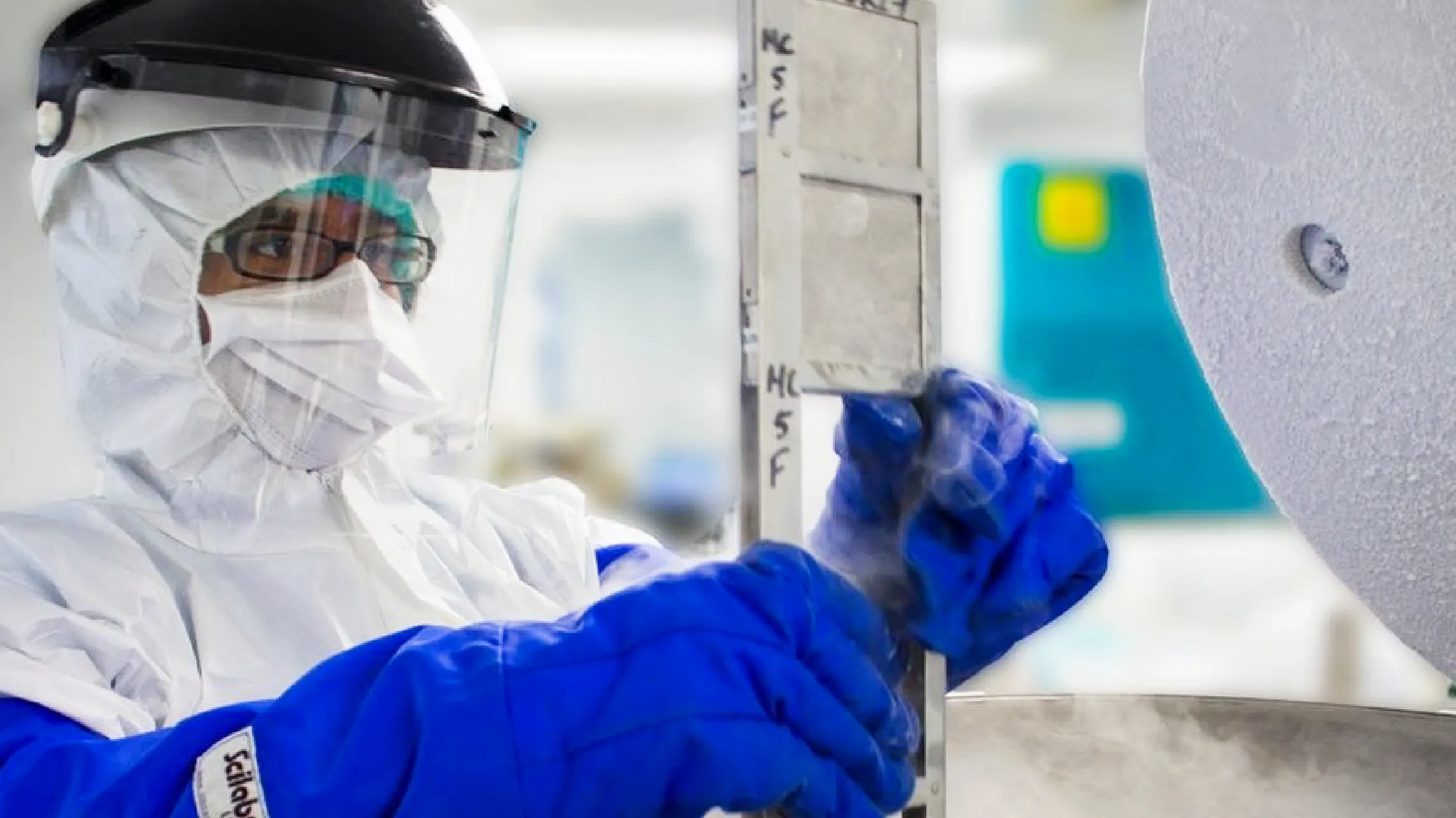
Adult stem cell preservation, specifically hematopoietic and mesenchymal types, have shown significant promise for human therapeutic applications. At present, human embryonic stem cells are primarily utilized to enhance our understanding of development and disease progression, while also harboring substantial therapeutic promise.
Stem cell preservation is crucial for their utilization in both clinical and research settings. Stem cell preservation enables the transportation of cells between locations and facilitates thorough safety and quality control testing. Additionally, stem cell preservation facilitates the establishment of a ‘manufacturing paradigm’ for cell therapies, thereby optimizing the production capacity of a given facility.
Stem cells are increasingly employed in the treatment of a growing array of diseases and conditions. For instance, hematopoietic stem cells (HSCs), traditionally utilized for treating leukemia, are now applied in therapies for conditions such as heart damage resulting from myocardial infarction, hereditary blood disorders, and autoimmune diseases. Bone marrow consists of a diverse mix of cells originating from hematopoietic, mesenchymal, and endothelial lineages.
Specifically, the mesenchymal component of these cells has demonstrated the ability to generate bone, cartilage, and muscle-like cells under controlled culture conditions. Mesenchymal stem cells (MSCs) are employed clinically for cardiac repair and enhancing the engraftment of hematopoietic stem cells.
Human embryonic stem cells (hESCs) are highly promising not only for advancing disease understanding but also as a foundation for cell-based therapies. Human embryonic stem cells (hESCs) face unique challenges, such as controlling cell differentiation, yet they surpass many of the hurdles encountered with adult stem cells, such as limited availability.
The Food and Drug Administration has greenlit the first U.S. clinical trial of hESC-based therapies for treating spinal cord injuries in humans. Stem cell preservation is essential for advancing both research and clinical applications of stem-cell-based therapies. It enables the establishment of cell banks containing various major histocompatibility complex genotypes and genetically modified clones. Since the collection of stem cells from sources like umbilical cord blood can be unpredictable or challenging to control, the capability to preserve cells allows for banking them until they are needed for research or clinical purposes.
Stem cell preservation enables the conduct of quality and safety testing prior to their use and facilitates the transportation of cells between collection sites, processing facilities, and clinical administration locations. Ultimately, the capacity to preserve cells for therapeutic use supports the establishment of a manufacturing framework for stem cell-based therapies. Stem cell preservation post-production allows for the synchronization of therapy with patient care schedules and decreases staffing needs in clinical cell production facilities.
Creating a cryopreservation protocol for a particular cell type necessitates specifying: Before freezing, preparing the cells introducing a cryopreservation solution freezing according to protocol storing under specified conditions thawing under controlled condition assessing post-thaw viability. In this review, our focus is on summarizing recent stem cell preservation studies conducted since 2000, which aimed to establish the protocol elements mentioned above for hematopoietic stem cells and mesenchymal stem cells.
For a broader historical perspective on hematopoietic stem cell preservation, readers can refer to reviews authored by Sputtek and colleagues (references 9–12). Additionally, our discussion will encompass the freezing of human embryonic stem cells, with a particular emphasis on recent studies conducted since 2000. Furthermore, we will explore emerging challenges in stem cell preservation as new applications for preserved cells continue to be developed and adopted.
Hematopoietic stem cells (HSCs) Recent studies aiming to enhance the cryopreservation of hematopoietic stem cells have primarily focused on two key areas: alteration of the cryoprotectant solution protocols for freezing and storage Dimethyl sulfoxide (DMSO) is employed in cryopreserving HSCs, typically at a concentration of 10%, which is widely used. Abrahamsen conducted a comparison of 5% versus 10% DMSO effects on CD34+ cells, demonstrating that survival increased from 52% to 74% with the lower DMSO concentration.
In a study by Galmes et al., there was no significant difference in engraftment among patients treated with cells preserved using a reduced DMSO concentration (5%), despite demonstrating a 60% reduction in DMSO-related toxicity. Similar findings were reported by Bakken et al. Other researchers have explored the incorporation of additives, alongside DMSO, aimed at enhancing the post-thaw recovery of HSCs. Studies have demonstrated that low levels of trehalose (25 mg/ml) and catalase (100 µg/ml) can mitigate post-thaw apoptosis in murine HSC models and enhance the recovery of colony-forming units from umbilical cord blood and HSCs isolated from fetal liver.
Cryopreservation solutions enriched with membrane stabilizers such as taurine, as well as antioxidants like ascorbic acid and α-tocopheryl acetate, have shown enhanced post-thaw recovery in studies. These findings indicate that additives beyond traditional cryoprotective agents can effectively shield cells from the stresses of freezing and thawing, thereby improving their recovery after thawing. Recent research has also focused significantly on studying how cooling rate and storage temperature impact HSC recovery. Current protocols typically involve using a controlled-rate freezer to cool HSCs at around 1°C per minute, followed by storage in liquid nitrogen. Several studies have explored the utilization of mechanical freezers at -80°C for cryopreserving HSCs.
Clappisson and colleagues employed a mixture of 3% hydroxyethyl starch (HES) and 5% DMSO in a -80°C mechanical freezer, achieving cell viabilities and BFU-E and CFU-GM activity slightly superior to those obtained with the standard 10% DMSO and controlled-rate freezer method. A similar outcome was noted by Kudo and colleagues, who used insulation around the PBPC product to regulate the cooling rate in a mechanical freezer.
Mesenchymal stem cells (MSCs) Only a few studies have explored the freezing characteristics of MSCs, testing various cryopreservation solutions. Carvalho et al. utilized culture media supplemented with 10% fetal calf serum (FCS) and 5% dimethyl sulfoxide (DMSO) to freeze MSCs isolated from rat bone marrow. Other researchers employed a comparable solution composition for cryopreserving human MSCs derived from bone marrow.
Stem cell preservation or post-thaw wash solutions are occasionally enriched with additives aimed at influencing cellular responses to the stresses of freezing and thawing (e.g., apoptosis inhibitors to mitigate cell losses due to post-thaw apoptosis). Heng et al. utilized a Rho-associated kinase (ROCK) inhibitor to enhance the long-term recovery of cells after thawing. Only a few studies have investigated the impact of freezing conditions on the post-thaw recovery of MSCs. Some of these studies have employed controlled-rate freezing of the samples. Carvalho and colleagues also assessed different cooling rates (3, 5, 10°C/min) but did not observe any significant variation in MSC survival with cooling rate.
Other researchers utilized mechanical freezers, with Heng et al. directly placing samples into a -80°C freezer, and Kotobuki et al. initially storing samples in a -30°C mechanical freezer followed by transfer to a -80°C freezer. Vitrification of MSCs involved rapidly plunging the samples in a cryovial into liquid nitrogen. To date, studies have not investigated the impact of storage conditions (temperature and duration) or the effect of warming conditions on post-thaw recovery. Post-thaw recovery measurements in the studies highlighted several challenges for MSCs.
Specifically, two studies observed that post-thaw viability measurements varied depending on the timing of the assay or the time elapsed post-thaw. More specifically, the viability of MSCs decreased over time post-thaw, with frozen-thawed MSCs showing a decline in viability from over 80% at 2 hours to less than 40% at 8 hours when kept at 4°C. This decline was likely due to post-thaw apoptosis, although markers of apoptosis were not monitored.
Additionally, different methods of measuring viability may produce varying results. Carvalho and colleagues observed a significant difference in viability when measured with trypan blue compared to 7-AAD (90.6% versus 66.3%). This disparity is unsurprising, as viability assessed by membrane integrity often does not correlate with functional measures of viability. Ultimately, post-thaw assessment of stem cells should incorporate more comprehensive assays, including evaluation of surface markers associated with stem cells and differentiation assays.
Read More about Stem Cells through the link below:
Smart Cells Storage Bank in UAE Your Child’s Healthy Future
At present, there is no universally agreed-upon protocol for preserving MSCs. Further research is essential to establish the optimal composition of cryopreservation solutions and the most effective cooling rates for MSCs. The utilization of MSCs in cardiac repair and the association of DMSO with various cardiovascular-related adverse reactions (such as hypotension and arrhythmia) raise concerns about using DMSO for MSC preservation unless it is completely removed before infusion or injection.
The rapid decrease in viability observed over time post-thaw by other researchers also indicates that post-thaw apoptosis is a significant concern for MSCs. One study proposed that these cells could potentially be ‘rescued’ by employing an inhibitor. Given the increasing number of disorders and patients treated with MSCs, there is a clear need for further research to enhance the stem cell preservation methods of these cells and thereby facilitate their clinical application.
Embryonic stem cells are derived from early-stage embryos, which are a cluster of cells formed when eggs are fertilized with sperm at an in vitro fertilization clinic. Since these stem cells are sourced from human embryos, numerous ethical concerns have been raised regarding embryonic stem cell research. Stem cell preservation is another critical aspect in this field. In 2009, the National Institutes of Health established guidelines for human stem cell research. These guidelines define embryonic stem cells, outline their permissible uses in research, and provide recommendations for their donation. Additionally, the guidelines stipulate that embryonic stem cell preservation from embryos created through in vitro fertilization can only be used if the embryos are no longer needed.
Reference:
https://www.ncbi.nlm.nih.gov/pmc/articles/PMC2781093/
https://www.mayoclinic.org/tests-procedures/bone-marrow-transplant/in-depth/stem-cells/art-20048117
Related Events

Smart Cells Laboratory Grand Opening
February 8th marks the grand opening of our first laboratory in the Middle East, and our Group's 14th laboratory worldwide. Smart Cells International, a proud member...

Cord Blood Banking FAQ’s
Should I consider using cord blood banking? In recent years, several companies have promoted a service for cord blood banking leftover umbilical after birth. This banked...

Unlocking the Secrets of Cord Blood Banking: Everything You Need to Know
Unlocking the Secrets of Cord Blood Banking: Everything You Need to Know Cord blood banking involves collecting potentially life-saving stem cells from the umbilical cord and...
Find out more
Claim your free guide online or talk to us to find out more
Accreditations